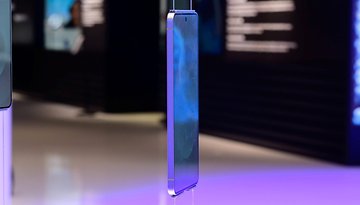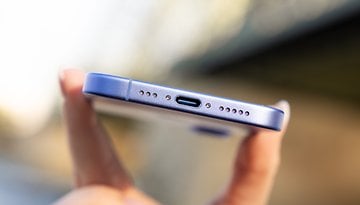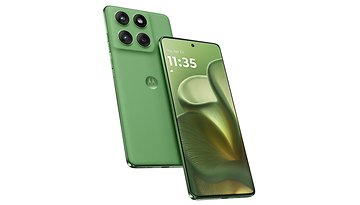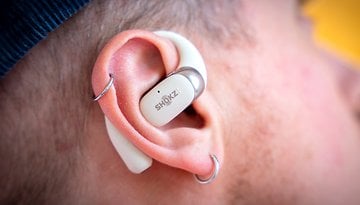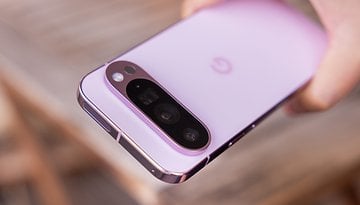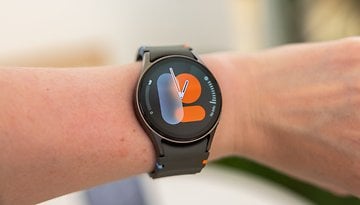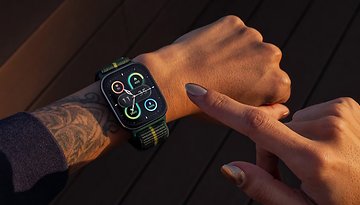Snapdragon 888: How Qualcomm's new super chip enhances your camera
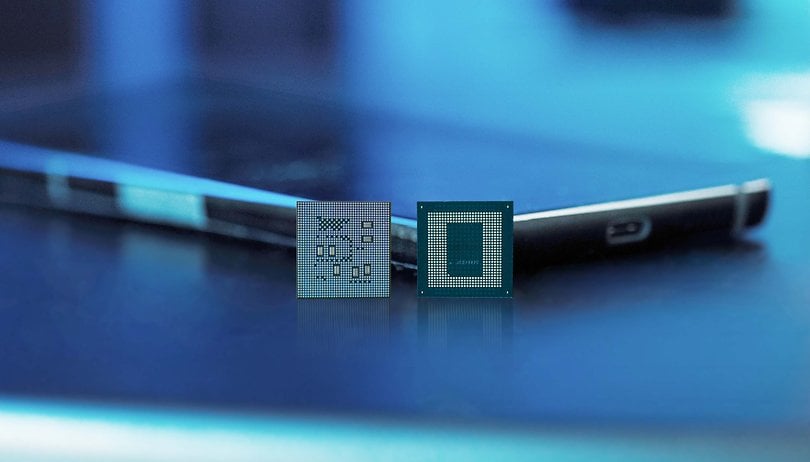

After Qualcomm introduced the new Snapdragon 888 in early December, more detailed information on the inner workings of the super-chip, which will be found in various Android flagships in the coming months, are now available. Especially the recording of videos and photos should improve a lot.
One of the most important parts of the Qualcomm 888 is the so-called Image Signal Processor (ISP), which is responsible for processing photos and videos. While the Snapdragon 865 had two ISPs, Qualcomm added a third ISP to this component of the new System-on-a-Chip (SoC). Qualcomm calls the new component the Spectra 580 ISP, the chip manufacturer told Android Authority in an interview.
Snapdragon 888: Simultaneous recording of three video streams
The third ISP in the Snapdragon 888, for example, now allows simultaneous recording with three cameras instead of two. This is useful for videos, for example, if you want to record several angles at the same time in order to combine them into one video later. As Android Authority learned in a conversation with Qualcomm, for example, three videos with different focal lengths can now be recorded in 4K at 30 frames per second in 10 bits.
In addition, the third ISP provides a better way to switch smoothly between multiple cameras. The feature gives the impression of using a single camera and changing the focal length optically when zooming. This was already possible with two ISPs, but required the chip to "guess" which camera the user would switch to next. Thanks to the third ISP, this "guessing game" is no longer necessary, since three sensors can be active at the same time.
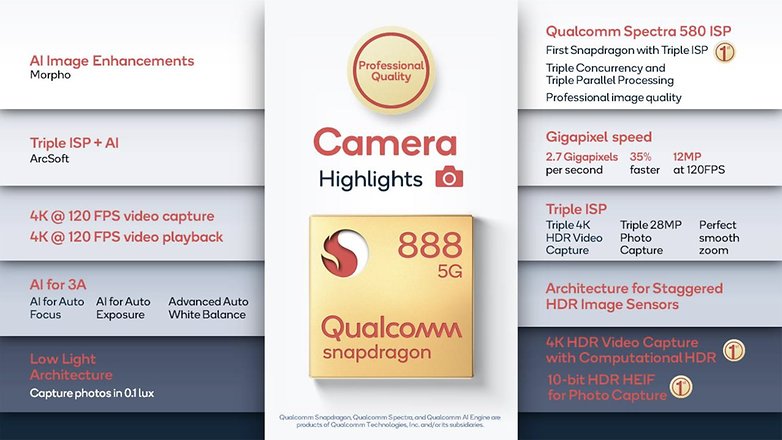
When recording and playing back a single video stream, Qualcomm now makes the leap to 4K at 120 frames per second, which is especially useful during post-production because you can slow down the video without faltering.
Snapdragon 888: Staggered HDR and shutter lag improvements
In the HDR area, the Snapdragon 888 natively supports the so-called "Staggered HDR" for video recordings. This is similar to the way many smartphones currently support it for photos, where different exposure times are used to capture light and dark areas of a scene. These are then combined by the chip to achieve a wider dynamic range. According to Qualcomm, the Snapdragon 888 can theoretically achieve this at up to 60 frames per second, because it actually takes 120 images, of which two images with different exposures are combined into one image. However, the company advises smartphone manufacturers to initially limit themselves to 30 frames per second when recording the digitally generated HDR.
AnandTech writes, however, that this would require new types of camera sensors that would support this staggered HDR. Samsung or Sony, the usual suppliers of such sensors, have not been heard of so far.
Qualcomm's new Snapdragon 888 also brings improvements in shutter lag. Up to now, all smartphones that could take pictures with more than 64 megapixels had a short delay after the picture was taken. Since the preview image could be displayed with a maximum of 64 megapixels, smartphones previously had to switch briefly between the resolution of the preview and the resolution of the recording. Thanks to the 35 per cent increase in performance, it should be possible in future for users to see images with up to 84 megapixels in the preview. The short delay after taking such high-resolution pictures would be shortened.
For better results with automatic white balance, automatic exposure and autofocus, Qualcomm relied on a large arsenal of images. This was used to teach the Snapdragon 888 via machine learning on how an image should look under certain conditions.
But they went a step further with autofocus, using VR headsets to observe people's eyes while viewing photos. This was done to find out which objects in a photo are important to the observer and should be focused accordingly.
Source: Android Authority, AnandTech






